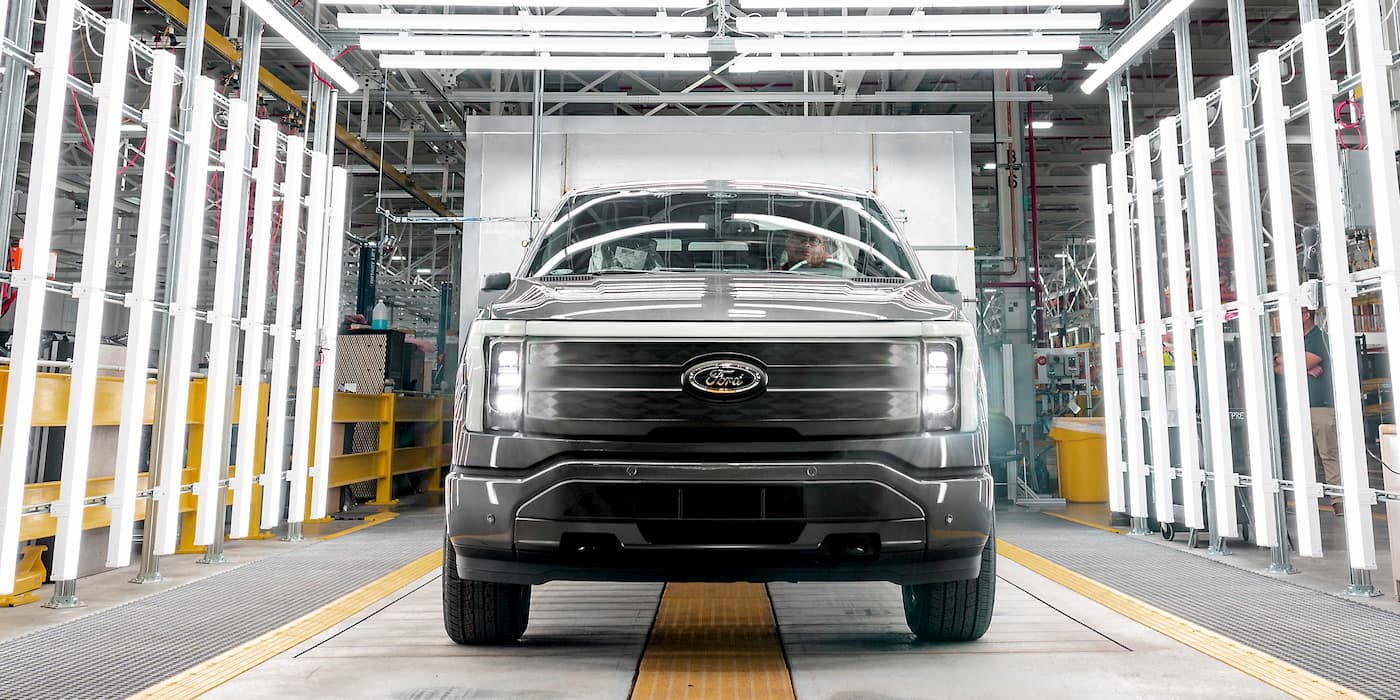
At its Capital Markets Day, VP of EV industrialization at Ford model e, Lisa Drake, said that the EV battery supply chain is “not necessarily a constraint.” Due to the arrangements Ford has made, including the new lithium deals revealed on Monday, the automaker is sticking to its two million EV run rate goal.
Earlier today, Ford detailed the automaker’s plans to achieve an 8% EBIT margin by the end of 2026.
The plans included continuing to implement what it has learned from its first-generation EVs – the F-150 Lightning and Mustang Mach-e – to drive down costs.
For example, Ford says it has retooled its Oakville assembly plant in Ontario with a CAD 1.8 billion (around $1.3 billion) investment, converting it into an EV and battery pack manufacturing hub. The facility will build its next-gen EVs, including an electric pickup and a three-row SUV.
The transformation resulted in zero operators in the mainline body shop, a 25% smaller paint shop, a 25% smaller final assembly, and a 60% reduction in battery pack labor with new processes and automation.
Although Ford is confident in hitting its profitability targets, some have questioned how the company plans to go from making roughly 100,000 EVs in 2022 to two million by the end of 2026. With EV battery supply becoming a growing concern throughout the industry, Ford discussed how it plans to overcome it.

Ford is not concerned with short-term EV battery supply
On Wednesday, several Ford Model e associates discussed the automaker’s raw materials strategy.
One of the biggest concerns was the lithium supply. Erica Rannestad, who leads Ford’s lithium team, explains although there is enough supply, time will be the real bottleneck.
Ford announced earlier today it had locked up 90% of the nickel and lithium needed to support its goal of building two million EVs annually by 2026. The company revealed deals with three lithium industry leaders in Albermarle, Nemaska Lithium, and SQM.
Albermarle is supplying over 100,000 metric tons of battery-grade lithium to support the production of three million EVs. The deal is part of a five-year agreement starting in 2026.
Meanwhile, Nemaska plans to supply 13,000 tons of lithium hydroxide per year over an 11-year period for a total of 143,000 tons.
Rather than chasing bigger batteries for more range, Ford says it’s all about efficiency. It’s focusing on smaller batteries, using fewer resources, with better performance. The automaker gives the example of its LFP battery. Altogether Ford says it has secured 240 GWh of battery cell capacity globally to support its initiatives.

Ford is confident it will be able to lower battery material costs as we advance for several reasons. For one, the company now plays a role in the supply chain and will have complete visibility over costs. Furthermore, Ford is signing significant forward-looking contracts for EV battery materials, giving it a good idea of what it can expect.
With different battery chemistries in the future, Ford will have the flexibility, if needed, to overcome higher material prices.
When asked if there were any concerns with shortages in the EV supply chain, Drake responded by saying, “It’s not necessarily a constraint [referring to lithium] because we do have arrangements,” but US domestic is the most concerning going forward.
Despite Ford locking in its share of the resources needed to hit its two million EV run rate, Drake says it “doesn’t solve for an ultimately closed loop circle.” Drake says recycling capabilities in the US will be the next big frontier we need to take on to support the EV rollout going forward.
FTC: We use income earning auto affiliate links. More.



Comments